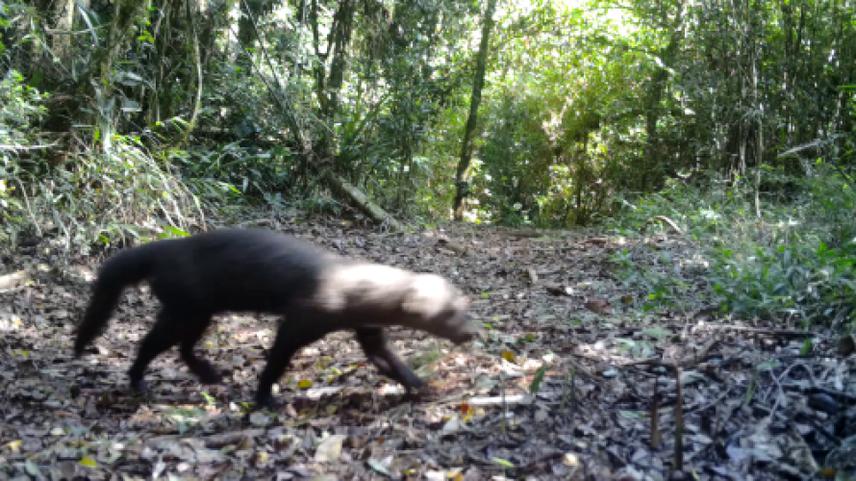Lana Resende Almeida
We aim to evaluate spatio-temporal activity patterns of three Neotropical Mustelids – Eira barbara (Tayra), Galictis cuja (Lesser Grison) and Lontra longicaudis (Neotropical Otter) –, and develop and improve non-invasive methods for their identification, population-size estimation and monitoring contributing towards an effective management in distinct landscapes. So, we will estimate different demographic parameters of the population and to determine the effectiveness of Conservation Units in the conservation and permanence of the three focal species. In addition, we will also test the existence of dietary differences between populations inside and outside Conservation Units and model the trophic network of each species along the anthropogenic land use change gradient. All this information will be relevant to improve of long-term conservation policies.

Eira barbara, Turvo State Park. © Neotropical Mustelids Project.
Mustelids have special relevance for biodiversity conservation since they occupy a variety of habitats and perform several roles in ecological networks. Many mustelids demand certain habitat integrity and depend on the preservation of large areas; for this reason, mustelid management and conservation have a direct positive impact on the conservation of other organisms. In order to evaluate the spatiotemporal patterns of habitat use by Eira barbara, Galictis cuja and Lontra longicaudis through a gradient of anthropogenic changes in land use, including Conservation Units with distinct levels of use and preservation of the landscape, as well as to test a recently developed non-invasive method for individual identification: chemical profiles of carboxylic and sulphonic acids from fecal samples.
We hope to be able to estimate different demographic parameters of the population (sexual ratio, adult-juvenile proportion) and to determine the effectiveness of Conservation Units in the conservation and permanence of the three focal species; we will also test the existence of dietary differences between populations inside and outside Conservation Units and model the trophic network of each species along the anthropogenic land use change gradient.
With this information we hope to be able to evaluate the role of the three species in structuring and maintaining the stability of the ecological networks in which they are inserted. In all, the knowledge obtained will contribute to informed decision making on the management of neotropical mustelids and their interaction with humans, aiming at the implementation of long-term conservation policies.